Thessaloniki: 6 Creative Locals Offer Their Own Tips
Six creative Thessaloniki locals share their...
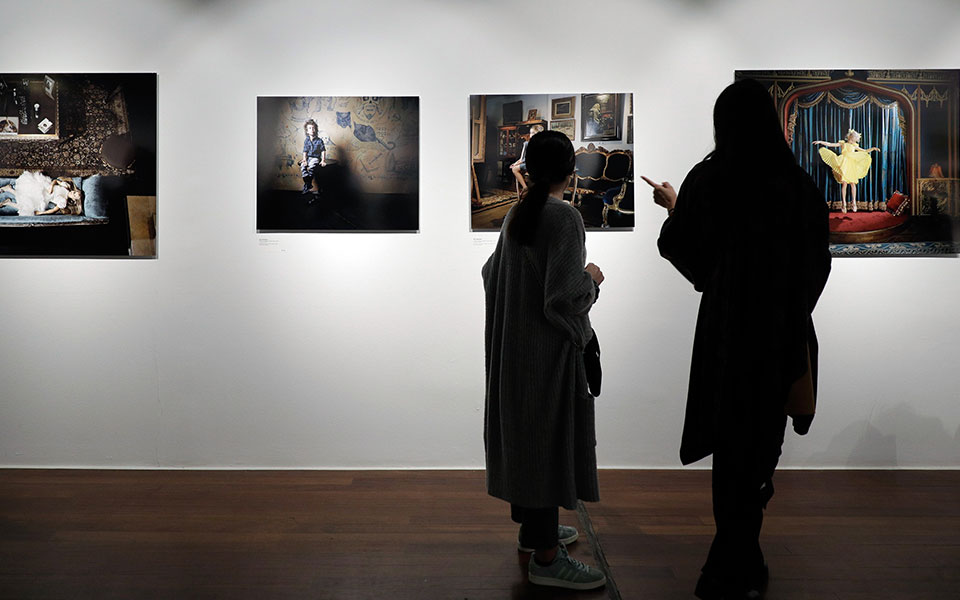
Thessaloniki Museum of Photography
© Konstantinos Tsakalidis/SOOC
“Exoches” roughly translates to the “countryside”. It was in this once leafy waterfront district east of the White Tower that Thessaloniki’s most prominent families – Jews, Muslims and Orthodox Christians alike – built mansions and houses of worship. The district flourished from the late 19th century until just before World War I, and was a showcase for Thessaloniki’s architectural eclecticism.
Many of these notable homes were torn down to make way for apartment buildings, particularly in the 1960s, while others stand in picturesque ruin. However, some of the finest examples have been handsomely restored and converted to cultural spaces open to the public; for instance today one such building houses the National Bank of Greece Cultural Center, a second houses the Folklife and Ethnological Museum of Macedonia-Thrace, and a third forms one of the main exhibition spaces of the Municipal Art Gallery of Thessaloniki. The gallery also hosts exhibitions in the Yeni Tzami, a former mosque of the Exoches district.
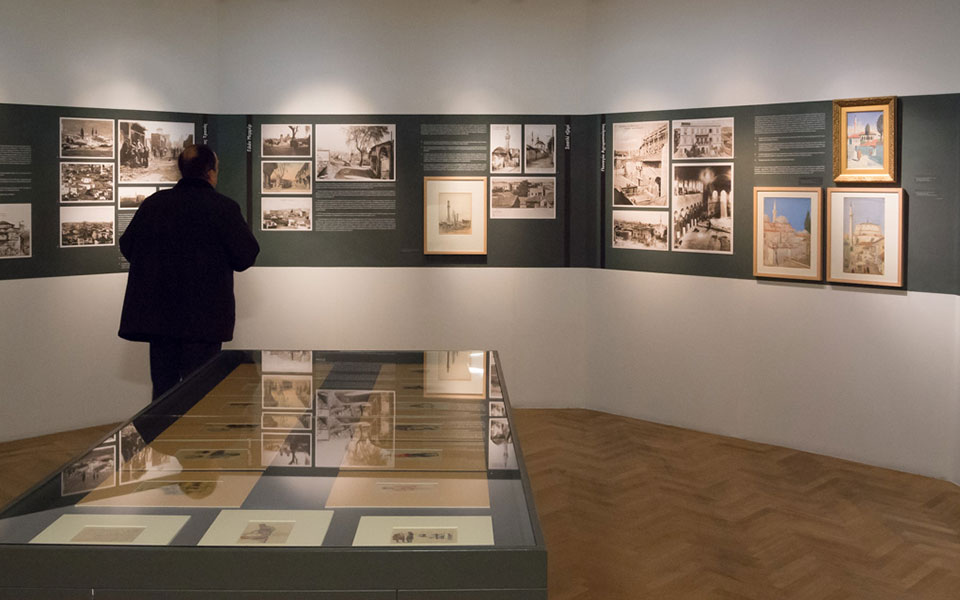
National Bank of Greece Cultural Center
Pierro Arrigoni, a celebrated late 19th-early 20th century Italian architect, designed this eclectic, vaguely Gothic villa in the early 1890s for Ahmet Kapandji, a member of a prominent family of the Ma’Min community. The villa played an important role throughout the turbulent decades of the 20th century.
Immediately after the liberation of Thessaloniki from Ottoman rule, this became the home of the first military governor of the city, Prince Nicholas. Then came World War I, dividing Greece; King Constantine favored neutrality, while Eleftherios Venizelos, having already served twice as the nation’s prime minister, supported the Allied Powers. Venizelos formed a provisional government headquartered in Thessaloniki, and the Villa Kapandji was his home during 1917.
The Great War was soon followed by another crisis in 1922, when ethnic Greek refugees fled to the city from Asia Minor with some taking up residence in the villa. Then, for decades, the building housed the 5th High School for Boys, with an interlude during World War II, when it was used first by the Greek army (as a military bakery), and then by the Germans. Later, it fell into disrepair and was ultimately abandoned in the early 1970s.
The National Bank of Greece restored it in the 1980s, opening the Thessaloniki Cultural Center in 1989. Since 1997, it has housed the Cultural Center of Thessaloniki, part of the Cultural Foundation of the National Bank of Greece (MIET).
The Exhibitions: Ambitious and creative exhibitions exploring Greece’s history and culture are regularly staged here. Past exhibitions of note include a collection of photographs taken by Robert McCabe in the 1950s – “The Dusk of our Old City”. The recent World War I exhibition “The forgotten front and the Greek experience” was particularly poignant, since the building itself had played a role in the events.
This Season: Τhe foundation is hosting “Photographs, Truths, and Lies 1985-2018” by photographer Costi Antoniadi. The exhibition is part of this year’s Thessaloniki PhotoBiennale, jointly organized with the Thessaloniki Museum of Photography and the Benaki Museum. Runs through November 11.
National Bank of Greece Cultural Foundation (MIET)
Villa Kapandji, 108 Vasilissis Olgas
Tel. (+30) 2310.295.170
Open: Tue – Sun 10:30-18:00
Admission Free
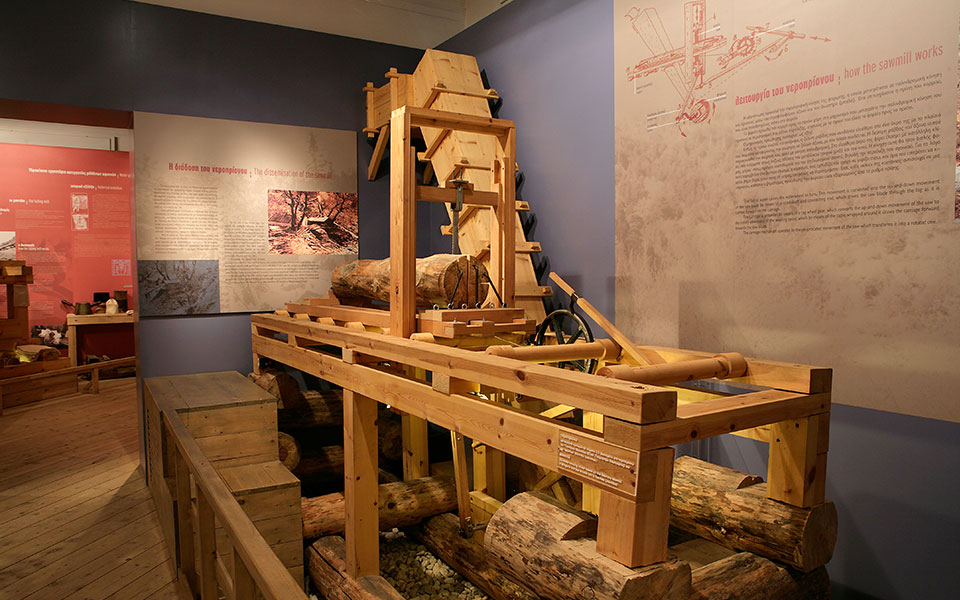
Folklife and Ethnological Museum of Macedonia-Thrace
Architect and engineer Eli Modiano (who designed the covered market that bears his name) built this brick villa in 1910-1912 for his father, the banker Jacob Modiano. Like the Villa Kapandji, the Villa Modiano played an important role in early 20th-century history.
It was purchased by the state shortly after the liberation of Thessaloniki in 1912 and offered to Constantine I as a palace. But the royal family never moved in; instead, it became the headquarters of the Provisional Government of National Defense during the so-called National Schism. It later served as the residence of the Governor General of Macedonia, before housing a military medical school and later a theological seminary.
Since 1970, it has been home to the Folklife and Ethnological Museum of Macedonia-Thrace. This is a top choice for a cultural outing with children. The ground floors host permanent exhibitions of water-powered mills for lumber, grain and cloth, providing a fascinating insight into Greece’s pre-industrial past.
On the upper story there is a wonderful exhibition of original traditional costumes of Macedonia and Thrace which date from 1860 to 1960. These offer an intriguing glimpse into the society, styles and even superstitions of old rural Greece, as clothing was seen as offering protection from not just the elements, but also dangers unseen, such as the “evil eye”, and even witchcraft. There is a charming café in the villa’s spacious garden.
This Season: The exhibition “A Portrait of Volos” documents the city and its people in the mid-20th century as seen through the lens of the respected amateur photographer Dimitris Letsios. Through December 31. Also on through December 31 is “The Soundscape of the Fire: Echoes from Thessaloniki of 1917”, an evocative and engaging audio experience by Dimitris Bakas.
Folklife and Ethnological Museum of Macedonia-Thrace
68 Vasilissis Olgas
Tel. (+30) 2310.889.840, 2310.889.855
Open most days: 9:00-15:30, every Wednesday 9:00-21:30, closed on Thursdays

The Municipal Art Gallery’s of Thessaloniki
The Municipal Art Gallery of Thessaloniki is headquartered in a mansion popularly called the Casa Bianca, even though it is not white at all, but ochre. The mansion was in fact named after Blanche Meyer, wife of the wealthy Jewish entrepreneur Dino Fernandez Diaz. Built to plans by Pierro Arrigoni in 1910-1912, the mansion is a beloved landmark and the city’s most overtly Art Nouveau-style building, with an asymmetrical façade and delightful round windows.
Casa Bianca, almost in complete ruin by the 1970s, is a triumph of preservation, restored with meticulous attention to historical detail, both inside and out. The Municipal Art Gallery’s curator, Alexia Xafopoulou, an artist herself, brings dynamism to the thoughtful and creative exhibits arranged around central themes. The gallery also plays an active role in the community, staging performances, lectures and educational events.
The first-level floor has a marvelous collection of the works of Nikolaos Gyzis, one of Greece’s most celebrated 19th-century painters, whose beautiful, approachable works of academic realism are fine examples of the so-called Munich School, an important artistic movement in Greece during the second half of the 19th century.
This Season: The works of the emerging photographer Petros Efstathiadis on the theme “Invisible borders/Improvised constructions” will be shown as part of the 53rd Dimitria and the Thessaloniki PhotoBiennale, in cooperation with the Thessaloniki Museum of Photography. Through November 30.
Municipal Art Gallery of Thessaloniki
180 Vasilissis Olgas
Tel. (+30) 2313.318.538
Open: Tue – Sat 10:00-16:00 (last entrance 15:45)
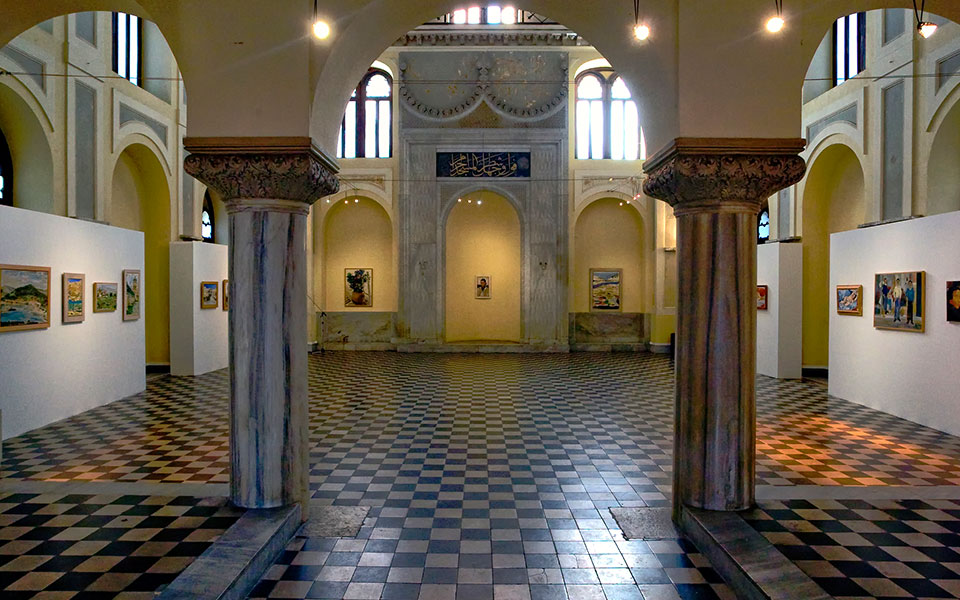
Yeni Tzami
The Italian architect Vitaliano Poselli designed some of the city’s most defining Belle Époque buildings. But the Yeni Tzami (“New Mosque”) is arguably his most interesting and best loved edifice. The mosque’s eclectic style aptly serves the community for which it was built, namely Thessaloniki’s Ma’Min community.
The Ma’Min (the “faithful”), also called the Donmeh (the “turned”), were Jews who had converted to Islam during the 17th century, following the example of the charismatic mystic Sabbatai Zevi. The Yeni Tzami successfully combines a number of seemingly disparate elements – classicism, an Islamic horseshoe arch, and, in perhaps a nod to the mysterious origins of the Ma’Min, a balcony shielded by a wall perforated with Stars of David.
The Ma’Min left Thessaloniki in the 1920s during the population exchange between Greece and Turkey, and the mosque they left behind initially became the city’s Archaeological Museum. Today the Yeni Tzami hosts exhibitions under the auspices of the Municipal Art Gallery, as well as concerts, poetry readings, performance art, and other cultural events. The magnificent interior with its checkered floor and ornate ceiling is one of the most atmospheric cultural venues in the city, and it’s worth a visit simply to see this exotic and beautifully intact building from a not-too-distant past.
Yeni Tzami
30 Archeologikou Mouseiou (between Vasilissis Olgas and Delfon)
Tel. (+30) 2310.857.978
Open: Tue-Fri 10:00-16:00 (last entrance 15:45), Sat 11:00-15:00 (last entrance 14:45)
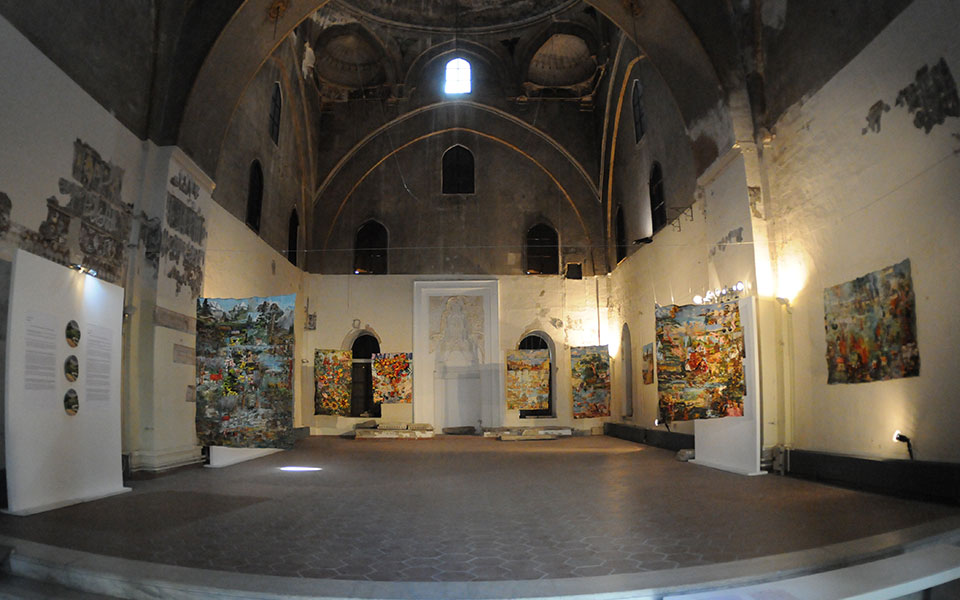
Alaca Imaret
A third exhibition space of the Municipal Art Gallery is, like the Yeni Tzami, a former mosque. The Alaca Imaret dates to Thessaloniki’s earliest Ottoman years, built in the late 15th century as a place of worship as well as a soup kitchen. It once had a minaret decorated with multi-colored stones, from which it gets part of its name (alaca: multi-colored, imaret: soup kitchen).
There is a distinct thrill of discovery when one comes upon the Alaca Imaret. Tucked away in an overgrown yard between apartment buildings, its crumbling porch is a favorite play area for local children. Enter through the inconspicuous door and you will find yourself in a dramatic interior with elaborately painted domes and walls bearing traces of Arabic script. In this evocative setting, the exhibitions and events organized by the Municipal Art Gallery frequently make use of the unique historical and aesthetic context provided by the Imaret.
This Season: A video installation entitled “Caution, works in progress” by Manolis Baboussis, whose works address the themes of institutions, monuments, memory, the environment, confinement, and loss, on a scale that is particularly suited to the unique space. Through November 3.
Alaca Imaret
91-93 Kassandrou
Tel. (+30) 2310.278.587
Open: Tue-Sat 11:00-18:00 (last entrance 17:45)
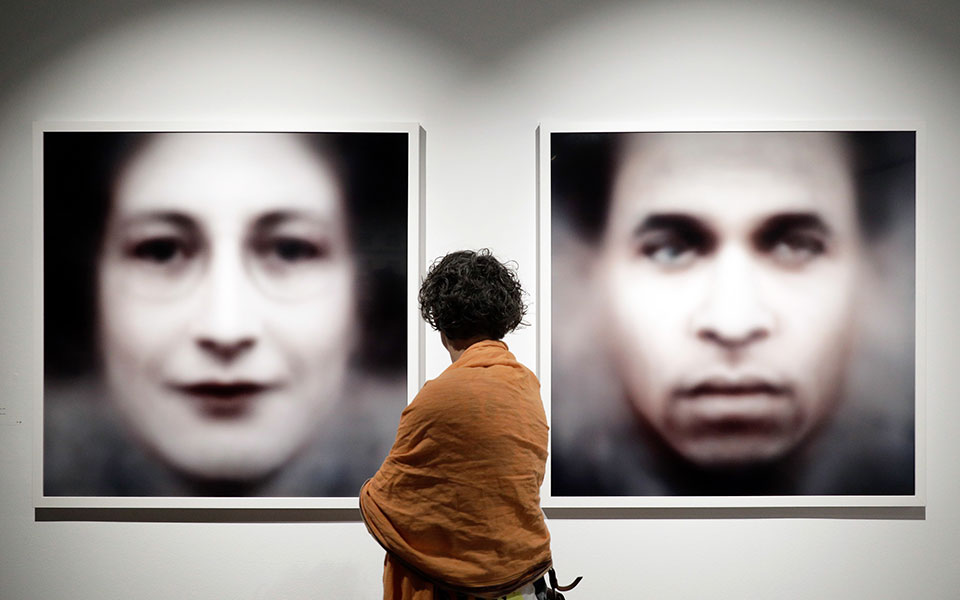
Thessaloniki Museum of Photography
© Konstantinos Tsakalidis/SOOC
During the many warm months of the year, the first pier of the harbor attracts dozens of people wishing to soak up the sun while enjoying the view of both the Thermaic Gulf and the city’s waterfront. The harbor’s former warehouses, built in the late 19th-early 20th century, now house screening rooms for films, as well as three museums: the Contemporary Art Center (an exhibition space of the State Museum of Contemporary Art), the Thessaloniki Cinema Museum, and the Thessaloniki Museum of Photography.
These are all wonderful museums to visit, but the Museum of Photography is housed in a particularly elegant example of industrial architecture. The café’s huge window overlooks the harbor and the back of the customs house built in 1910. Dedicated solely to the art of photography, this very active museum holds seminars, workshops, masterclasses, conferences and lectures in addition to exhibitions.
This Season: The 30th anniversary of the Thessaloniki PhotoBiennale is being celebrated at museums, galleries and exhibition spaces throughout the city. The works of nearly 30 Greek and international photographers will explore the theme of “Capitalist Realism” at the PhotoBiennale’s central exhibition at the Thessaloniki Museum of Photography. Through January 27, 2019.
Thessaloniki Museum of Photography
Warehouse A, Port of Thessaloniki, 3 Navarchou Votsi
Tel. (+30) 2310.566.716
Tue, Wed, Thu, Sat & Sun 11:00-19:00, Fri 11:00-22:00, (closed Mondays).
Six creative Thessaloniki locals share their...
From postmodern bougatsa to wood-fired pizza...
A Thessaloniki expert selects 13 spots...
From major infrastructure projects to a...